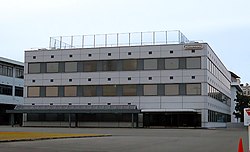Top Qs
Timeline
Chat
Perspective
Nintendo Research & Development 2
Former team within Nintendo that developed software and peripherals From Wikipedia, the free encyclopedia
Remove ads
Nintendo Research & Development No. 2 Department,[a] commonly abbreviated as Nintendo R&D2, was a Japanese team within Nintendo that developed software and peripherals. While usually occupied in system operating software and technical support, the team would come back to early development in the 1990s where several new designers got their start at game development, the most famous being Eiji Aonuma who developed Marvelous: Another Treasure Island.
The team was formed as a spin-off of the older Nintendo Research & Development No. 1 Department and was initially led by Masayuki Uemura, who previously worked for Sharp Corporation. Using an idea of Sharp's solar technology, Uemura's department went on to develop the popular Nintendo beam gun games, selling over 1 million units. Kazuhiko Taniguchi took Uemura's position in 2004. Nintendo R&D2 was later merged into Nintendo SPD.[1]
Remove ads
History
In the 1970s, Nintendo created the R&D2 department.[2]
In 2004, the department's general manager Masayuki Uemura retired from Nintendo.[3][4] Following his retirement, he became a professor at the Ritsumeikan University in Kyoto, and served as an advisor to Nintendo Research & Engineering.[5]
Products developed
Electronic games
Video game consoles
Video games
Remove ads
Notes
References
External links
Wikiwand - on
Seamless Wikipedia browsing. On steroids.
Remove ads

